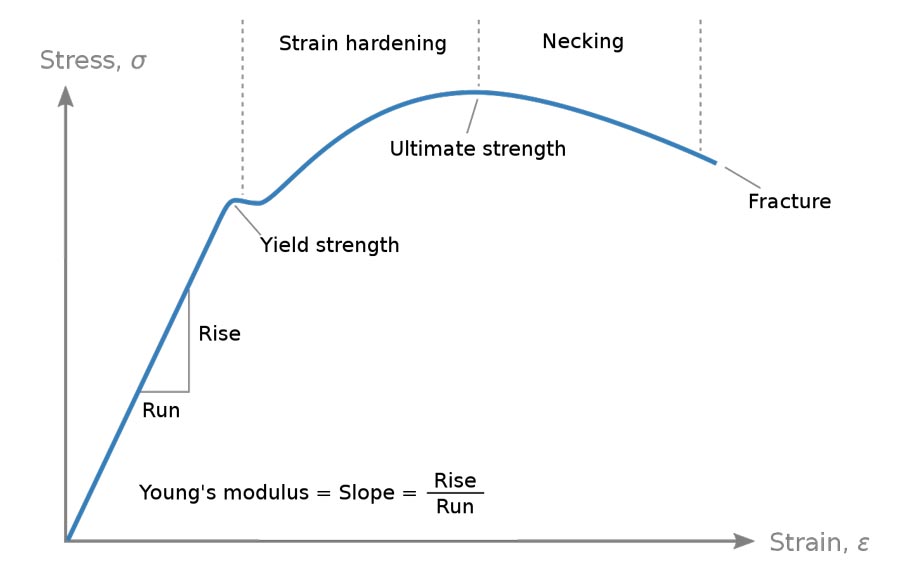Contact Stockwell Elastomerics
Request a quote or get more information.
What is Compression Force Deflection?
Compression force deflection (CFD) is a common term in the rubber foam and sponge industry – it’s available on most datasheets, it has a defined ASTM testing procedure, and it is one of the best ways to characterize firmness/softness of elastomeric materials.
CFD is essentially the relationship of stress and strain for a given material – the “compression” in the name refers to the type of force, and the “deflection” refers to the amount the material moves with reference to its starting value (i.e. thickness). In simple terms, compression force deflection describes how a rubber material compresses under a given force.
A note on deflection: Customers can often refer to deflection as compression. We always recommend keeping the terms separate. An easy way to remember this is the following: Compression is a force, or something you DO. Deflection is a change in position, or something that HAPPENS as a result.
Many engineers are familiar with stress-strain relationships; foundational courses in most engineering curriculum cover them at length! Typically stress-strain graphs look like this, and are measured in tension (not compression):

Generic Stress-Strain of a Metal – By Nicoguaro – Own work, CC BY 4.0, https://commons.wikimedia.org/w/index.php?curid=89891144
However, there is a key difference between a metal (as shown above) and a rubber material. While it may sound surprising, the metal above is elastic at the beginning of the curve – which means for much of the curve there is a linear relationship between the stress and strain at moderately small values, and the metal will “bounce back” or recover in this linear area of the graph. It makes it very easy to predict a given stress or strain given one or the other in this range. This relationship is defined using Young’s Modulus, which is the slope of the linear portion of this curve.
Compare this curve above to a typical CFD curve of a silicone foam shown below. This curve is generated using compressive forces, as opposed to the tensile forces used to generate the curve above.
Generic CFD Curve for Silicone Foam – Generated by Stockwell Elastomerics
It is apparent that this material does not exhibit the same general curve shape as a metallic material. There is not a distinct linear relationship, so Young’s Modulus is not a meaningful characteristic for this kind of material. A CFD curve must be consulted in order to understand how a rubber material will behave under a given compressive load. Unlike metals, there isn’t a simple linear relationship that can be used to predict strains.
Sounds Simple Enough – But Why Does This matter?
Many of the parts that Stockwell Elastomerics provides are meant to provide some sort of seal, cushion, or pressure. In most applications, materials need to be compressed in order to function properly – so it’s of paramount importance that customers understand what is needed to achieve adequate compression! In addition, many customers will have limitations that further complicate things – not enough available force, stringent sealing requirements, limited space, etc.
In many instances, gasket design comes very late in the process of a design – a sudden realization that an IP ratings test needs to be passed, an unexpected customer complaint on water damage, or other more complicated and difficult design challenges arise that must be addressed first! Although gasket design may sometimes come late, it is often a “make or break” factor. Understanding what needs to be achieved in a gasket design early on is crucial, and knowing about CFD gives engineers another tool to ensure a robust design.
Eric French
Senior Applications Engineer, Stockwell Elastomerics
Contact a Stockwell Elastomerics Application Engineer for assistance with compression-related projects.
Request a quote or get more information.
